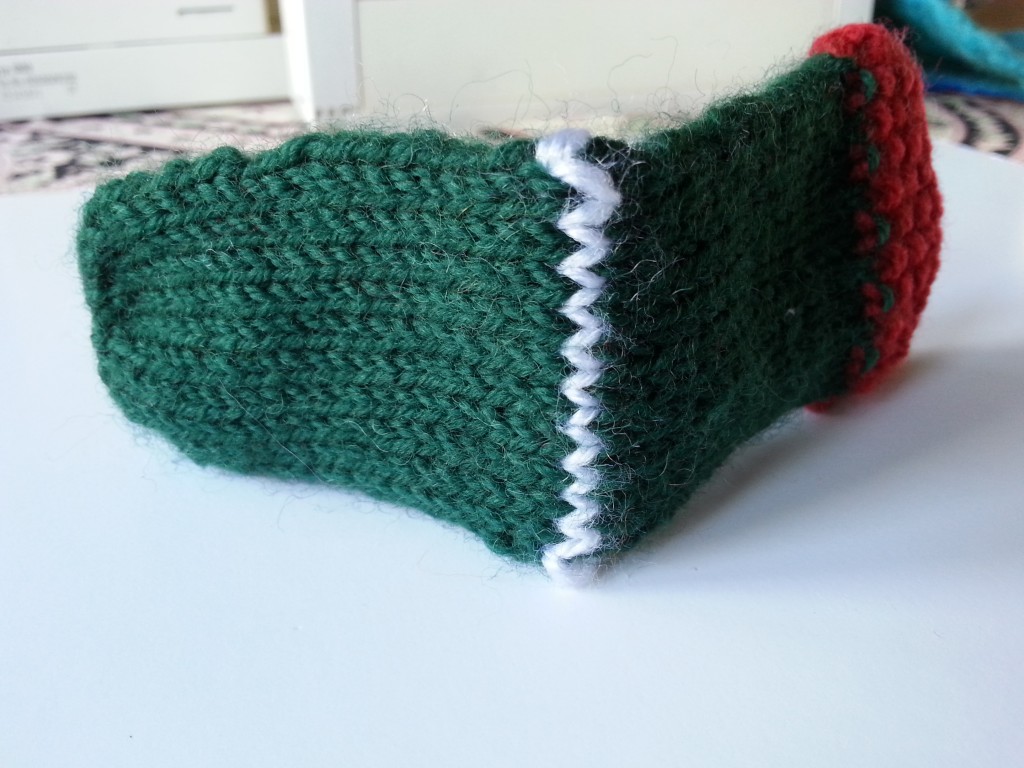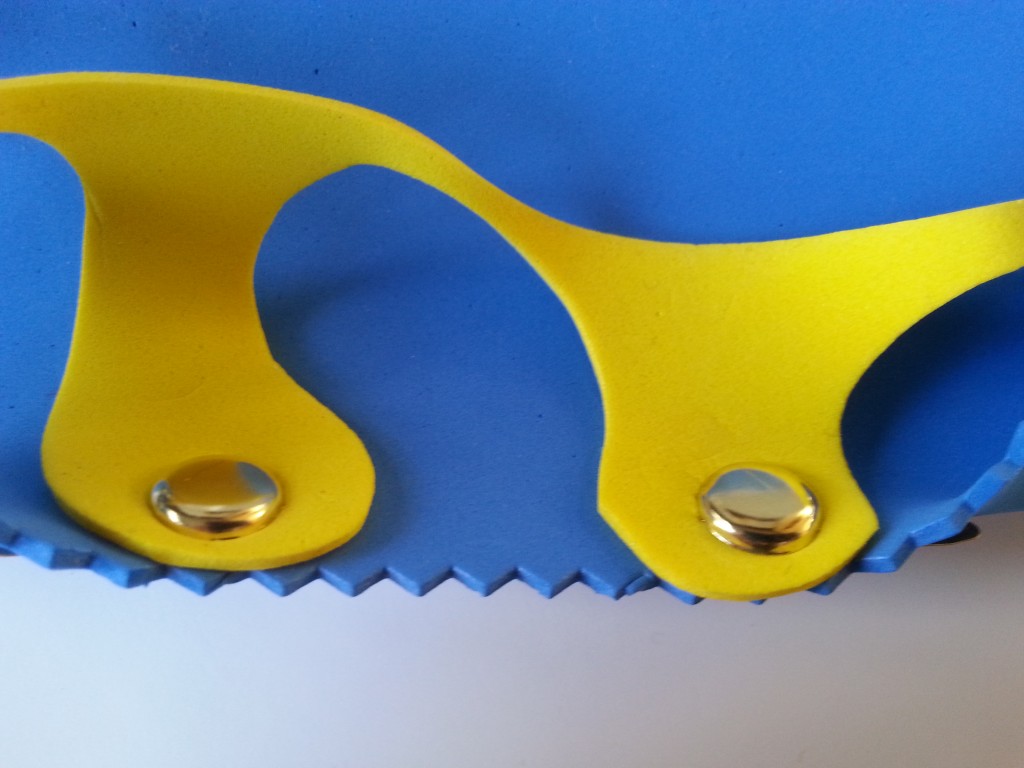Paper joined with coloured PVA
- Coloured PVA on paper
- Coloured PVA on paper
- Coloured PVA on paper reverse
- Coloured PVA on paper reverse
For the first sample I cut pieces of paper gift bag, laid them on clingfilm with a gap in between and painted PVA (coloured with acrylic paint) across the paper and over the gap. I wanted to see how well the PVA would hold the edges without any support. Once the PVA was dry (I painted three layers), I carefully peeled it away from the clingfilm.
The PVA formed an interesting, quite translucent bridge between the paper. The join was pliable but probably a little too thin and delicate for any meaningful use as a true corner. An experiment worth doing, however, and one that could be repeated by using extra layers of PVA, marbling the colours or trying thicker papers and card to see how well the PVA would hold up with heavier materials.
Scored card
- Scored card
- Scored card
This was a simple sample, creating a corner by scoring a piece of card. Although the card was quite thick, by almost going through the card, creating perforations, it enabled me to make a good, strong corner shape.
Origami paper
- Origami paper
This sample uses origami techniques to create an envelope with flat corner shapes. This was a development of some of the origami techniques I used in Assignment One.
Leather, funky foam and staples
- Leather, foam and staples
- Leather, foam and staples
- Leather, foam and staples
- Leather, foam and staples
The two textures and structures of the foam and the leather made these interesting materials to work with. I wanted to test whether it was possible to use the staples as hinges, folding them to create a book cover style corner. This worked surprisingly well, however, I’m not sure how well the staples would hold up to being repeatedly bent so this would likely be suitable for a decorative corner rather than a practical purpose.
Leather and wire
- Leather and wire
- Leather and wire
- Leather and wire
- Leather and wire
- Leather and wire
- Leather and wire
Having had some success with the jewellery wire in the joining straight edges with gaps exercise (exercise 2) I chose wire again for this sample. I punched holes in two pieces of leather, coiled the wire around a pencil and wound the wire through the punched holes. This created a successful corner that would make a good spine for a notebook or journal. Placing the leather with the wrong and right sides together created a good juxtaposition of textures.
EXTENSION SAMPLES
Cardboard tubes and paper fasteners
- Cardboard tubes and paper fasteners
- Cardboard tubes and paper fasteners
- Cardboard tubes and paper fasteners
- Cardboard tubes and paper fasteners
Inspired by John Bisbee’s work with nails I collected a number of toilet roll tubes and joined these in a manner similar to his soldering technique using brass paper fasteners in place of solder. This created a range of interesting shapes and there is lots of scope to expand this technique further.
Packing pellets
- Packing pellets
- Packing pellets
- Packing pellets
- Packing pellets
This piece took inspiration from Hsaio-Chi Tsai. I joined packing pellets with hand-dyed yarn in a complex arrangement based loosely on a sphere. It is frustrating that the pellets are not particularly durable as these spheres could be joined together to create much bigger, more dramatic structures. I’ll have to look into the availability of non-biodegradable pellets.
Naturally dyed handmade felt, naturally dyed yarn and fishing line
- Natural dyed felt, yarn and fishing line
- Natural dyed felt, yarn and fishing line
- Natural dyed felt, yarn and fishing line
- Natural dyed felt, yarn and fishing line
This sample was difficult to photograph but is inspired by Hsaio-Chi Tsai’s Chryanthemum’s Falling installation at Kew Gardens. The use of natural dyes reflects the plants from the gardens, the fishing line is intended to create an impression of materials suspended without support. The use of skeined yarn converts the joining material into the material being joined, blurring the lines between the two.
Grafting knitting
- Grafting knitting
- Grafting knitting
For a complete change of direction, this sample uses grafting – a means of invisibly joining two pieces of knitted fabric using the live stitches on the needles and creating a row of stitches between the two rows. I’ve worked with a different colour here to demonstrate the technique – normally it would be worked in the same colour if the intention was to create a seamless join.
Picking up knitted stitches
Another knitted sample, this time to explore a means of neatly joining around a curve. By picking up stitches perpendicular to the main work (here around a curved neckline) this creates a softly curved, stretchy join.
Foam and paper fasteners
- Foam and paper fasteners
- Foam and paper fasteners
- Foam and paper fasteners
- Foam and paper fasteners
A return to an old favourite – foam sheets and paper fasteners. This time using remnants to create curved “corners”. Perhaps not true corners but a very tactile sample with many exciting shapes and surfaces to explore.
Funky foam and weavette square
- Weavette square and funky foam
- Weavette square and funky foam
- Weavette square and funky foam
- Weavette square and funky foam
This was not a favourite sample. Although the softness of the woven fabric formed well around the curved, pinked edge of the foam, it was not a satisfying join. The shapes were not pleasing and the overall finished sample disappointing. There was perhaps too much difference between the open texture of the weave and the solid blandness of the foam.








































